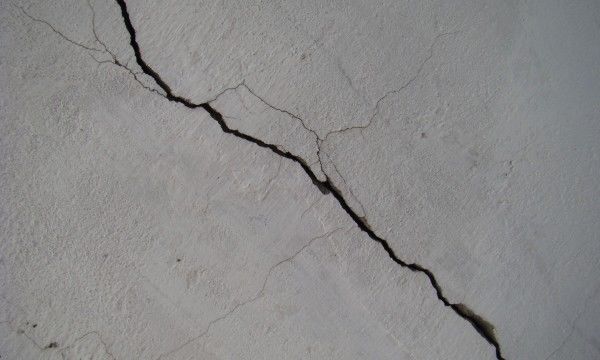You might find it surprising, but following just a few simple tips can make a big difference in what you can do yourself to fix cracks and dents in walls.

Make a smooth drywall mud
To help you make drywall mud with a smooth consistency every time, add the drywall mud powder to water, not the other way around.
- If you add water to the powder, you’re more likely to end up with a mud mix full of big lumps of dry powder either because there’s not enough water or too much powder.
Instructions for small and large cracks
If a crack is large, deep and has an uneven width, then it might be a sign of a structural problem.
- Before you try to fix this kind of crack in a wall, get professional help to remedy what might be wrong with the house’s structure.
Small cracks that affect only the surface of the wall or the plaster material itself are probably superficial and can be easily repaired with a ready-mixed filler.
The cleanliness of the container and the instruments is paramount
Make sure that the container in which you mix drywall mud, any implements you use to mix it, and the water itself is absolutely clean.
- Wash and rinse all of your equipment between mixes, so that no lumps of setting plaster or other impurities get into your next mix.
Use a drill with a mixing tip
A drill with a stirrer attachment will make your drywall mud mixing much easier, but be sure that the stirrer is submerged in the mix before you start the drill. Otherwise your mix will splatter.
Prepare only the necessary amount of drywall mud
When working with any type of drywall mud, mix only as much as you think you can apply in 20 minutes or less.
- It’s always better to throw out mixed drywall mud once it begins to set than to reconstitute it with more water.
- This is because reconstituted mud will have a lumpy finish.
Apply thin layers
Drywall mud commonly shrinks as it dries. The shrinkage in a shallow patch will likely go unnoticed, but in a deep patch this shrinkage can lead to a significant crack.
- To avoid the shrinkage problem all together, patch deep holes and cracks in several shallow layers.
- While working on a larger crack, wait for each layer of drywall mud to dry thoroughly, then score the surface before adding more mud on top.
Use clips to gypsum
Drive drywall staples part way into the surface being covered to prepare a large, shallow wall crater for your drywall mud.
- The drywall staples act as anchor points for holding the filling compound in place until it makes a secure bond.
- Make sure the level of your staples is slightly below the surrounding wall surface so that they don’t stick out from the wall when you’re finished.
If you follow these simple tips on your next drywall repair job, you might surprise even yourself with how well your job looks and holds up over time.

Fint innlegg, jeg har delt det med vennene mine.
Nice post, na-share ko na sa mga kaibigan ko.